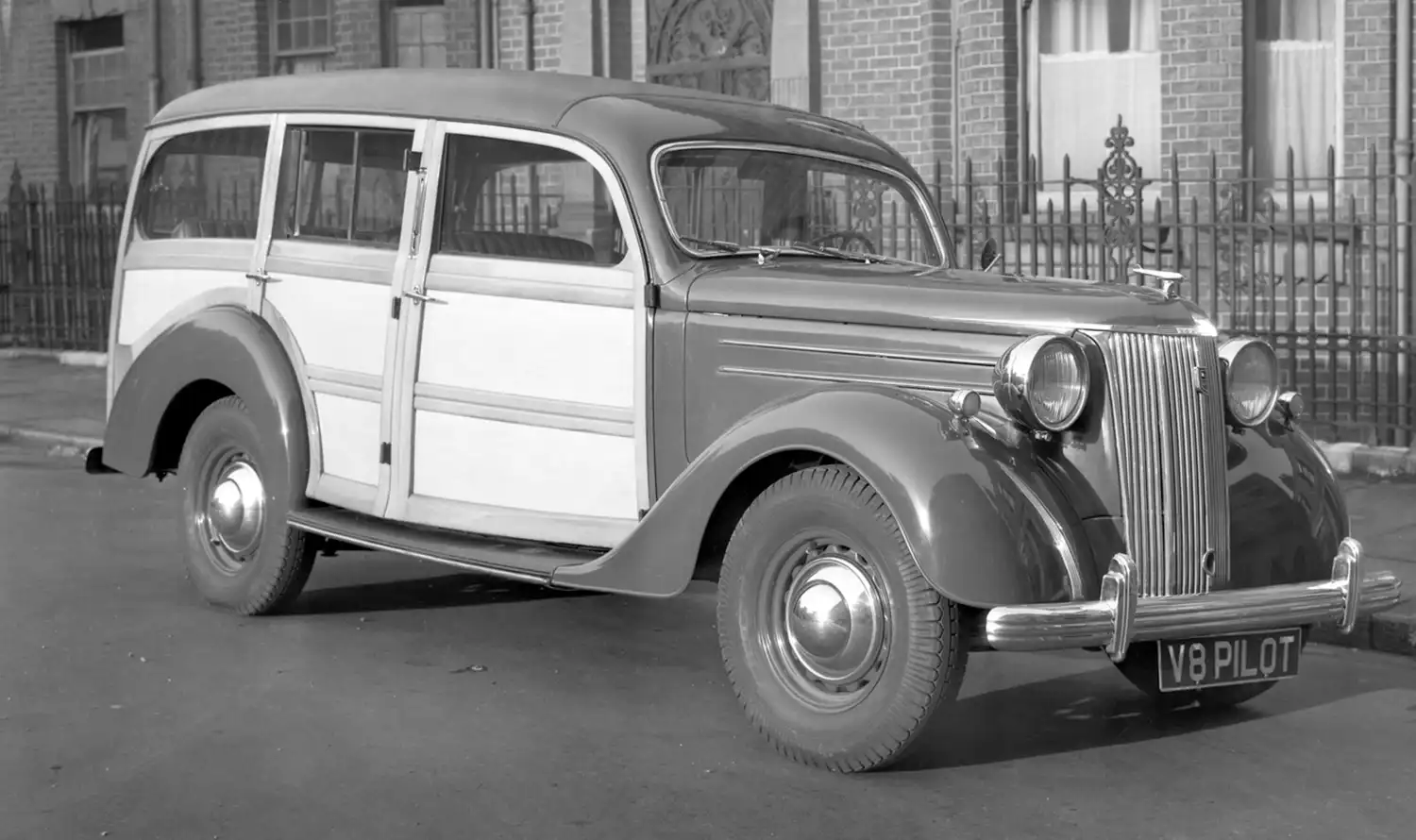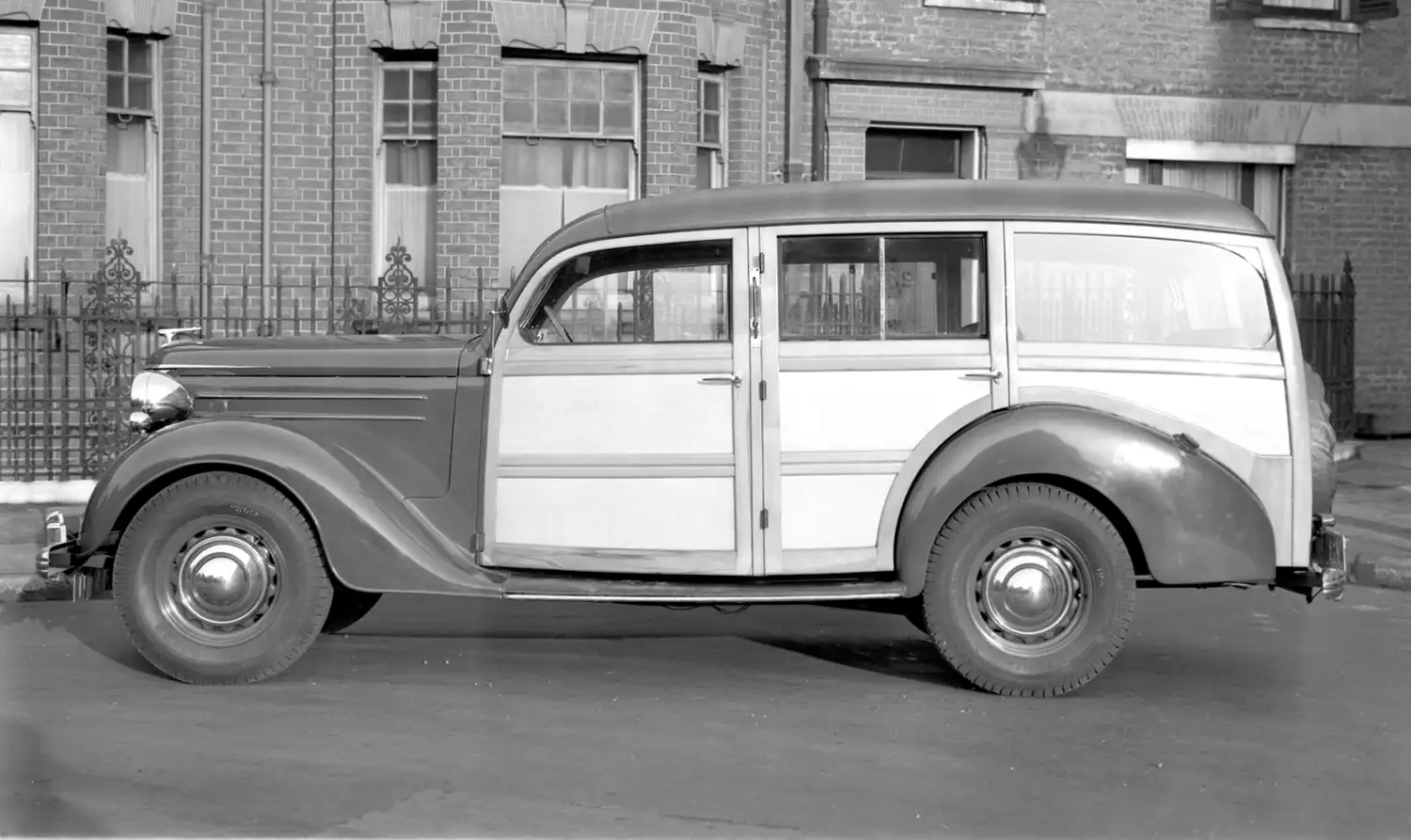
Take a moment to appreciate automotive history. Today, we delve into the story of an undisputed classic, the 1948 Ford Pilot Woody Estate. This vehicle isn’t just a car; it’s a genuine 1948 Ford Pilot Woody Estate Auto Icon. It represents a unique blend of post-war ingenuity and timeless craftsmanship. These ‘Woody’ wagons, with their distinctive timber bodies, hold a special place in the hearts of car enthusiasts and history buffs alike.
The Dawn of a New Era for Ford
After World War II, car production slowly resumed in Britain. Ford of Britain launched the Pilot in 1947. This was a significant step forward for the company. It marked a return to civilian vehicle manufacturing. The Pilot aimed to meet the needs of a changing society. It offered a mix of practicality and style.
The Distinctive ‘Woody’ Construction
The ‘Woody’ part of its name comes from its unique construction. The rear bodywork featured extensive use of wood. This was not merely decorative. It formed a crucial structural component. Skilled craftsmen built these wooden frames. They used ash, beech, and mahogany. This gave each estate a distinctive look.
Why Wood? Post-War Resourcefulness
Using wood was a resourceful decision for Ford. Steel was in short supply after the war. Timber, however, was more readily available. This method of construction was also traditional for estate cars. It lent itself to custom coachbuilding. The result was a vehicle both functional and beautiful.
Design Elements of the Pilot Estate
The 1948 Ford Pilot featured a robust chassis. Its design reflected the times. The front end was typical of post-war Fords. It had a prominent grille and rounded fenders. The wood body at the rear created a striking contrast. It added a touch of rustic elegance.
Interior Comfort and Practicality
Inside, the Pilot Woody offered ample space. It could comfortably seat a family. The interior was practical and durable. Seats were often upholstered in hard-wearing fabrics. It was designed for utility. Yet, it retained a certain charm. Many families appreciated its versatility.
Power and Performance of the Pilot
Under the bonnet, the 1948 Ford Pilot Woody Estate was powered by a 3.6-liter (222 cu in) side-valve V8 engine. This engine was a significant feature for its time. It produced around 81 horsepower. This gave the car a respectable top speed. It could reach approximately 80 miles per hour. The V8 engine provided smooth power delivery. This was quite advanced for a British car of that era. It offered a strong torque output. This made it suitable for carrying passengers and luggage. The Pilot also featured a three-speed manual transmission. Its robust drivetrain handled varied road conditions well. Performance was considered strong for a family vehicle. This made it a capable tourer.
The Role of the Pilot Woody
The Woody served many purposes. It was a family car. It was also used by businesses. Hotels and country estates often employed them. They transported guests and luggage. Its versatile nature made it popular. It could adapt to many roles.
A Symbol of British Recovery
The Ford Pilot Woody became a symbol. It represented Britain’s post-war recovery. It showed a return to manufacturing. It embodied a spirit of resilience. This car helped people get back on the road. It facilitated everyday life and commerce.
Legacy and Collectibility Today
Today, the 1948 Ford Pilot Woody Estate is highly sought after. Collectors cherish its unique character. Its rarity adds to its appeal. Restored examples command significant prices. They represent a tangible link to the past. These cars evoke nostalgia.
Preserving Automotive History
Owners often dedicate much effort. They preserve these wooden wonders. Maintaining the timber body requires special care. It needs regular attention. This dedication ensures that future generations can admire them. The wooden structure tells a story.
A Unique Driving Experience
Driving a Pilot Woody is truly unique. You feel connected to a different era. The V8 engine hums quietly. The wooden body creaks gently. It’s a sensory experience. It’s about enjoying the journey. It’s not just about speed.
Influence on Later Models
The Pilot Woody also influenced later designs. While all-steel bodies became standard, its spirit lived on. The idea of a versatile family estate car persisted. Ford continued to produce practical vehicles. They built on this legacy.
The Enduring Appeal of ‘Woody’ Wagons
‘Woody’ wagons, in general, hold a special place. They represent a bygone era. They remind us of simpler times. Their charm is undeniable. The 1948 Ford Pilot ‘Woody’ is a prime example. It embodies that timeless appeal.
A Global Icon
While a British Ford, the Pilot Woody’s style resonated globally. It echoed American ‘Woody’ designs. It became a recognizable shape worldwide. Its distinct appearance transcended borders. It is indeed an auto icon.
The 1948 Ford Pilot Woody Estate stands as a testament to post-war automotive resilience and unique design. Its blend of practical utility, V8 power, and distinctive timber construction makes it a true automotive legend. This iconic vehicle continues to capture imaginations.
Disclaimer: All vehicles are subject to prior sale. Specifications and features are based on available information and may vary. Interested parties should verify all details independently.
Source: Ford Heritage Vault
